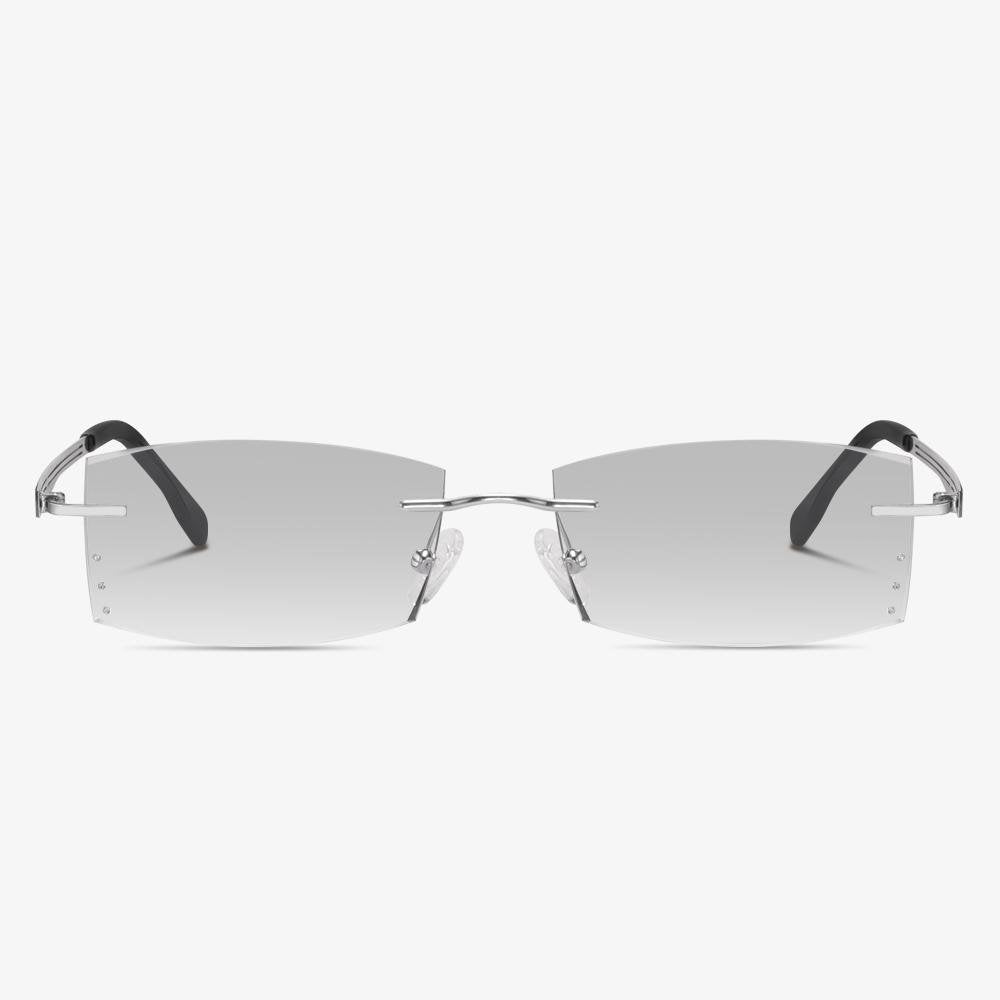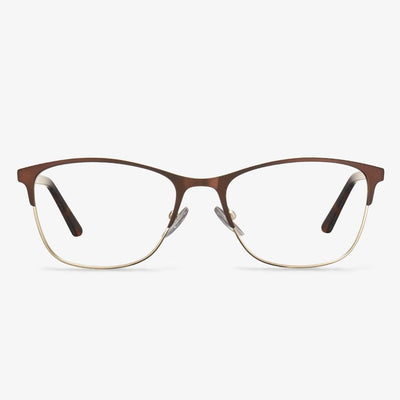What effect does a lens with the hard film have?
In order to improve the wear resistance of the lens, it is necessary to coat the surface of the lens with hard film. At present, silicon atoms are used to stiffen the membrane, that is, the stiffening solution containing organic matrix and inorganic superfine particles including silicon element is used to make the hard film have toughness and hardness at the same time. Because the common resin lens is far easier to wear than the glass lens, so the addition of hard film is mainly used for resin lens. It is usually applied to the front surface of the lens, and the anti-wear ability of the resin lens with the film will be enhanced a lot, and the light permeability will be strengthened.
Other problems with titanium frames
For the same volume of frames, alloy frames are twice as likely to break as pure titanium frames, and for the same weight, alloy frames break more easily than pure titanium frames.Therefore, some sellers have to add a lot of copper in alloy material and impure titanium material to increase the toughness of the frame, so that the alloy frame is easy to rust, and long-term wear will be eroded because of the salt in sweat.
Where to buy clear eyeglasses?
When shopping for new clear eyeglasses, you can easily feel overwhelmed by the endless racks of styles and brands. The way to access value is to buy from a store that offers great advice, where you’ll be told whether more expensive frames warrant their higher prices or that you’d do just as well with a lesser-known brand. Koalaeye Optical offers “Wear in Comfort, Look in style” eyeglasses and sunglasses. If you buy glasses online from us, you will get a huge variety of frame styles and colors. And the prices are highly affordable so they won’t burn a hole in your pocket.
Disadvantages of Prism Glasses
Although prism glasses are mostly used for correcting binocular vision, they also have some disadvantages which are said by those who have worn them. They said they suffer from some discomforts, such as headaches, pain with eye movement, wandering eyes. Misaligned eyes, nausea, double vision, and more. In most cases, side effects can be corrected with an adjustment to someone’s lens prescription, eyeglasses frames or medication.
At the same time, you need to know that alignment is extremely important when wearing prism lenses. Prism lenses may be not efficient if they are misaligned. But they can be fixed with a professional adjustment. If you are experiencing any problems with new glasses or your old prism lenses stop working, contact your vision optometrist.
Advantages of Progressive Lens
Continuous and clear vision throughout the entire process is the advantage of progressive lenses. Because the added value continuously increases gradually in the gradient zone, the wearer can obtain continuous clear vision from the far point to the near point through the gradient lens under the appropriate head position. In line with physiological optics, better adaptation. The appearance is better than that of double-lens and triple-lens. There is no dividing line of sub-sheets, and there is no ring-shaped blind zone and invisible sub-sheets.
Why do you need low bridge glasses?
The glasses always slide in front of the nose. No one wants to keep putting their glasses back in place, especially in a conversation. Your glasses will slide down your nose, in other words, they won't sit on the bridge of your nose, and the frames will hit your cheeks, which may give you a cheek rash. The glasses move when you smile or laugh. The lenses rub against your eyes/eyelashes.
When were the first glasses invented?
No one knows when the first pair of glasses were invented, but we do know that the grinding techniques for making simple magnifying glasses have been around since 1000 AD, especially in regions where glasses were already produced (including northern Italy). The earliest artwork of glasses appears in the Treviso Cathedral fresco painted by Tommaso de Modena in 1352. There is reliable evidence that eyeglasses were invented in Italy in the late 13th century. The first pair we think of as eyeglasses appeared in Italian pizza in the late 12th century and looked more like two small magnifying glasses (made of raised glass) riveted together at the top of the handle. In 1266, The English Franciscan Monk Roger Bacon wrote about the scientific principles of corrective lenses, but there is no evidence that he applied this knowledge to the manufacture of eyeglasses.











































